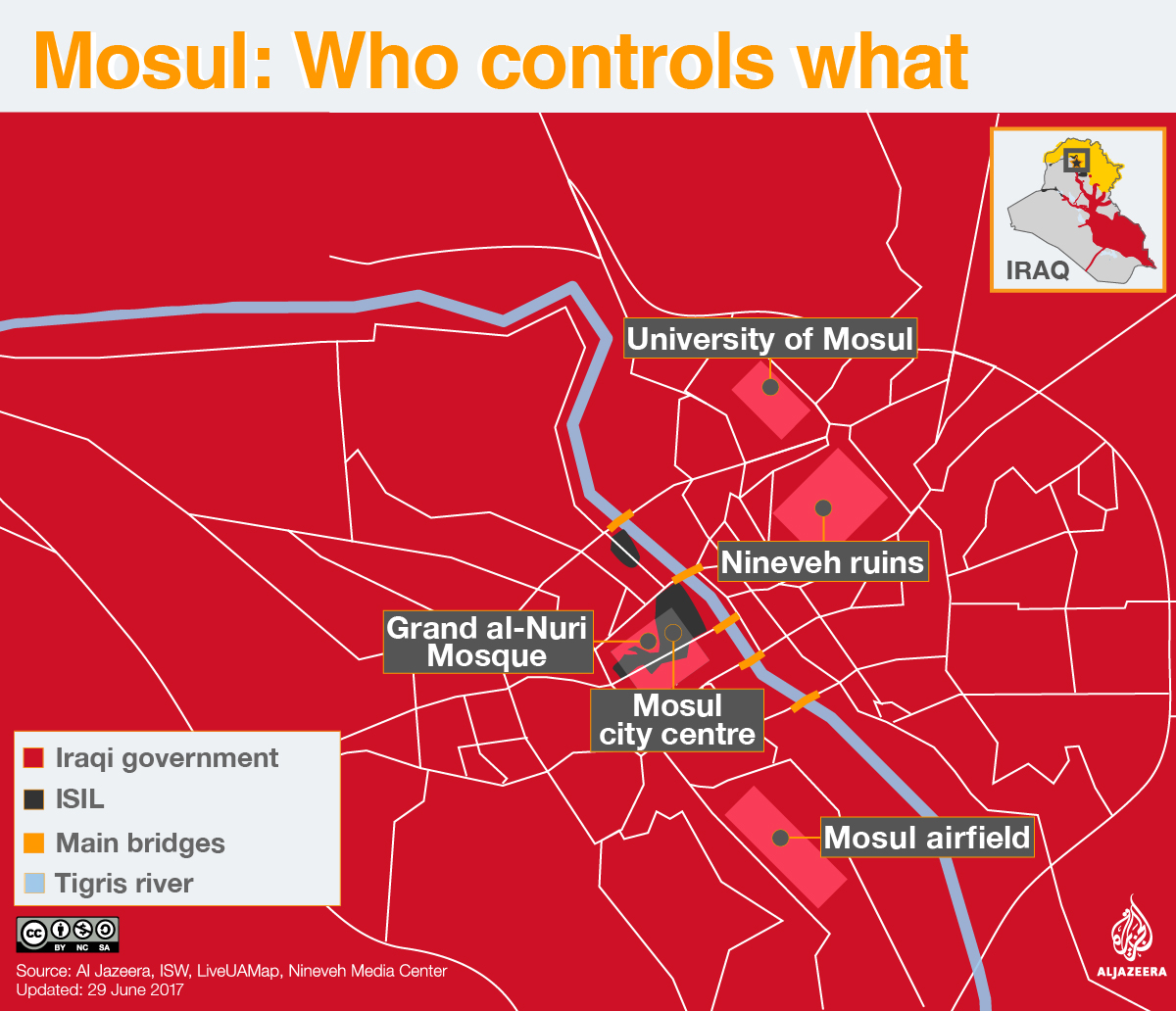“The return of al-Nuri Mosque and al-Hadba minaret to the fold of the nation marks the end of the Daesh state of falsehood,” Abadi said in a statement, using an Arabic acronym for ISIL, also known as ISIS.
Iraqi authorities expect the battle to end in the coming days as the Islamic State of Iraq and the Levant (ISIL) group has been bottled up in a handful of neighbourhoods of the Old City.
A large part of the mosque was blown up by the group last week.
The mosque and its famed Al-Hadba (hunchback) leaning minaret were Mosul landmarks and also held major significance in the history of ISIL rule in Iraq.
READ MORE: Grand al-Nuri Mosque in Iraq’s Mosul ‘blown up’ by ISIL
Baghdadi appeared during Friday prayers at the mosque in 2014, soon after ISIL seized Iraq’s second-largest city, calling on Muslims to obey him, in what remains his only known public appearance.
Three years later, Baghdadi’s fate and whereabouts remain unknown, and ISIL has lost much of the territory it overran in 2014.
The fighters blew up the mosque and minaret on June 21 as they put up increasingly desperate resistance to the advance of Iraqi forces.
‘Declaration of defeat’
Officials from Iraq and the US-led anti-ISIL coalition said the destruction of the site was a sign of the group’s imminent loss of Mosul, with Abadi calling it an “official declaration of defeat”.
READ MORE: As ISIL’s ‘caliphate’ crumbles, its ideology remains
The loss of the iconic 12th century minaret – one of the country’s most recognisable monuments – left the country in shock.
But the destruction had been widely anticipated, with commanders saying ISIL would not have allowed Iraqi forces to score a hugely symbolic victory by recapturing the site.
 |
| An ISIL flag was seen on top of the minaret of the al-Nuri mosque in the Old City in western Mosul before it was destroyed [Erik De Castro/Reuters] |
ISIL claimed on its Amaq news agency that the site was hit in a US air strike, but the US-led coalition said it was the fighters who had “destroyed one of Mosul and Iraq’s great treasures”.
Russia has said it is seeking to verify whether the ISIL leader, whose whereabouts have been unknown for months, was killed when its warplanes hit the group’s leaders in a night air raid in Syria last month.
READ MORE: Russia claims killing ISIL leader Baghdadi
Al Jazeera’s Bernard Smith, reporting from Erbil, said the recapture of the mosque compound was a significant blow to ISIL.
“What it helps us understand is how slow and how difficult a fight it has been to regain the Old City,” Smith said.
“Not long after ISIL forces blew up the al Nuri mosque and its minaret, Iraqi forces said they were about 50 metres away. It’s then taken more than a week to advance those 50 metres and to take control of the mosque compound.
“And even though Iraqi forces say they’ve got control of the area around the mosque, they’ve not gone into what’s left of the compound because they believe like everywhere else they’ve captured in the Old City, it’s been booby-trapped.”

![Iraq army seizes ruins of Mosul mosque from ISIL A large part of the mosque was blown up by the ISIL last week [Reuters]](http://www.aljazeera.com/mritems/imagecache/mbdxxlarge/mritems/Images/2017/6/29/c11630348cb547dd8a7cd58ae13680af_18.jpg)